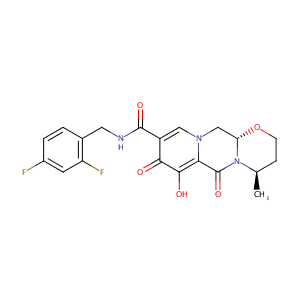| 1 |
ClinicalTrials.gov (NCT04484337) Study to Evaluate Pharmacokinetic (PK), Safety and Tolerability of Cabotegravir (CAB) 400 Milligrams Per Milliliter (mg/mL) Formulation in Healthy Adult Participants
|
| 2 |
URL: http://www.guidetopharmacology.org Nucleic Acids Res. 2015 Oct 12. pii: gkv1037. The IUPHAR/BPS Guide to PHARMACOLOGY in 2016: towards curated quantitative interactions between 1300 protein targets and 6000 ligands. (Ligand id: 7365).
|
| 3 |
ClinicalTrials.gov (NCT02951052) Study Evaluating the Efficacy, Safety, and Tolerability of Switching to Long-acting Cabotegravir Plus Long-acting Rilpivirine From Current Antiretroviral Regimen in Virologically Suppressed HIV-1-infected Adults. U.S. National Institutes of Health.
|
| 4 |
Radium 223 dichloride for prostate cancer treatment. Drug Des Devel Ther. 2017 Sep 6;11:2643-2651.
|
| 5 |
Tarascon Pocket Pharmacopoeia 2018 Classic Shirt-Pocket Edition.
|
| 6 |
Mechanisms of action, pharmacology and interactions of dolutegravir. Enferm Infecc Microbiol Clin. 2015 Mar;33 Suppl 1:2-8.
|
| 7 |
Dolutegravir Impairs Stem Cell-Based 3D Morphogenesis Models in a Manner Dependent on Dose and Timing of Exposure: An Implication for Its Developmental Toxicity. Toxicol Sci. 2021 Nov 24;184(2):191-203. doi: 10.1093/toxsci/kfab112.
|
| 8 |
Clinical pipeline report, company report or official report of GlaxoSmithKline (2009).
|
| 9 |
Disposition and metabolism of cabotegravir: a comparison of biotransformation and excretion between different species and routes of administration in humans. Xenobiotica. 2016;46(2):147-62.
|
|
|
|
|
|
|


